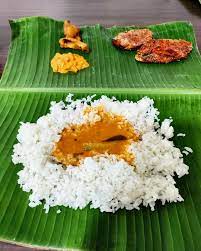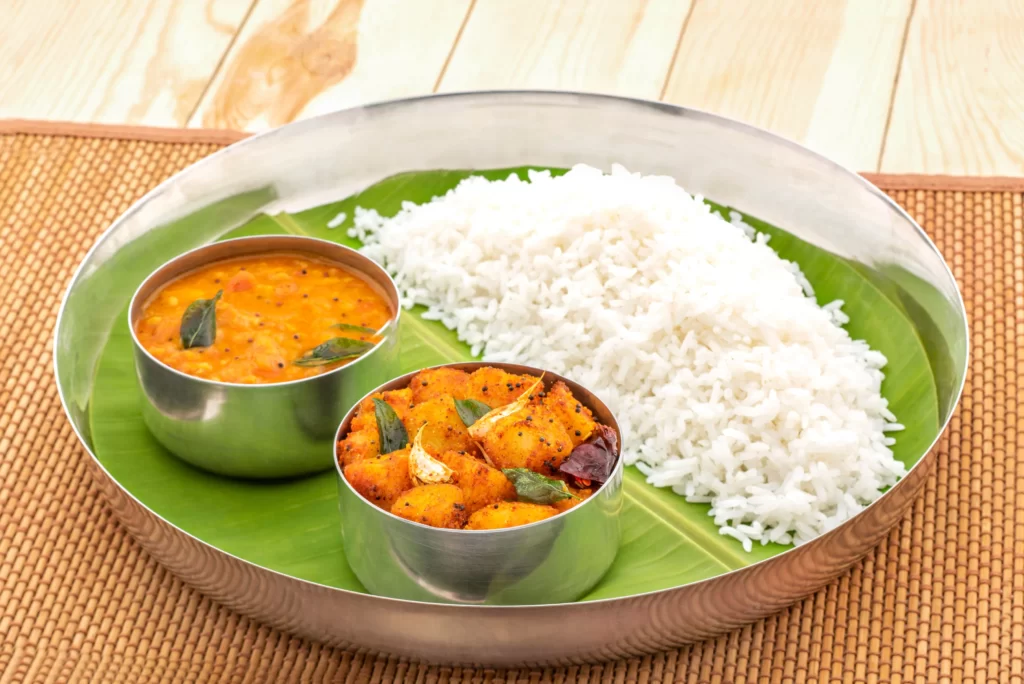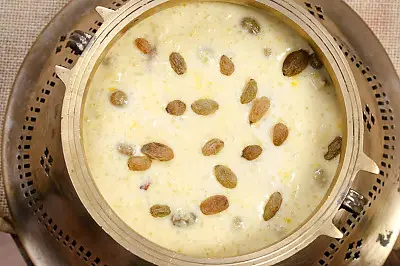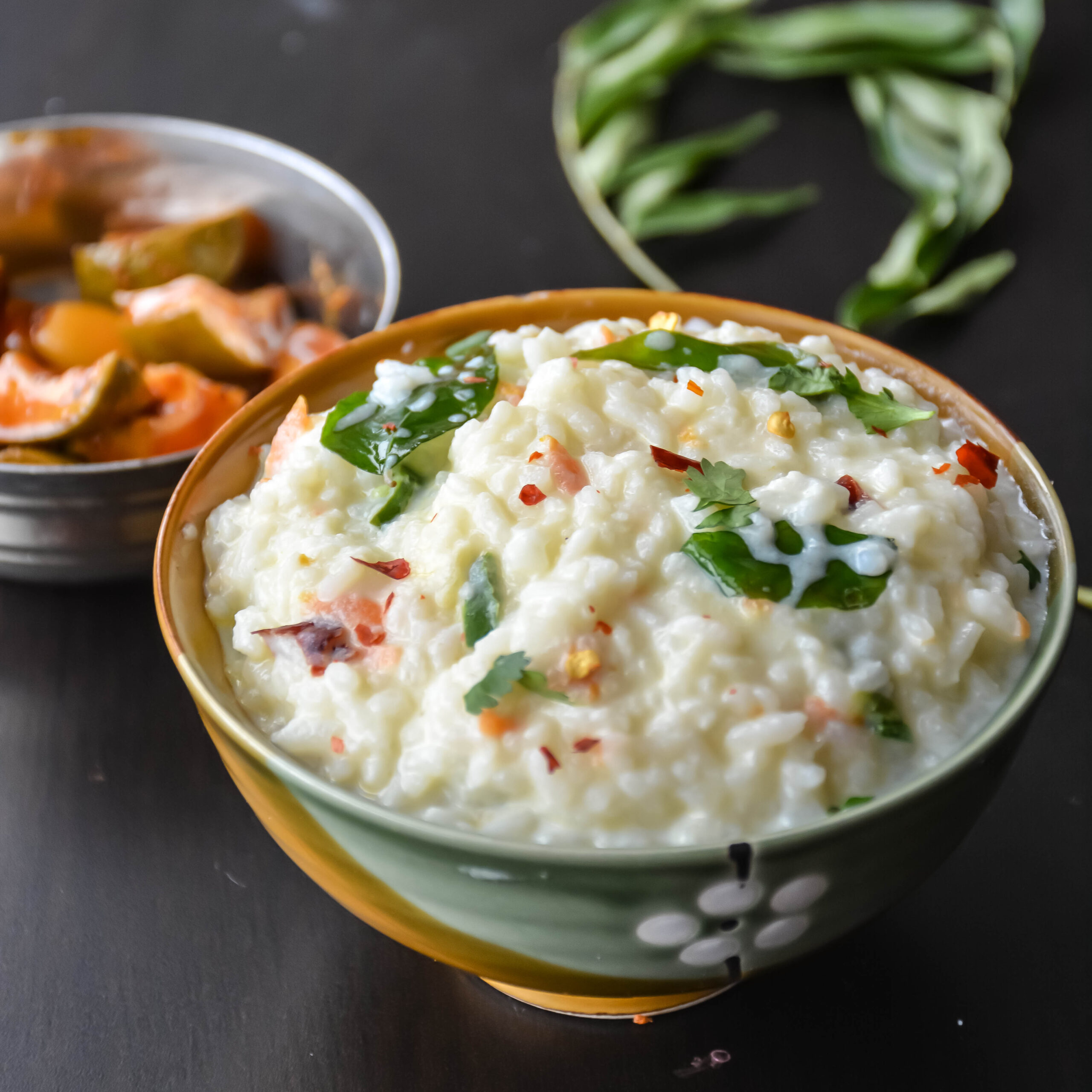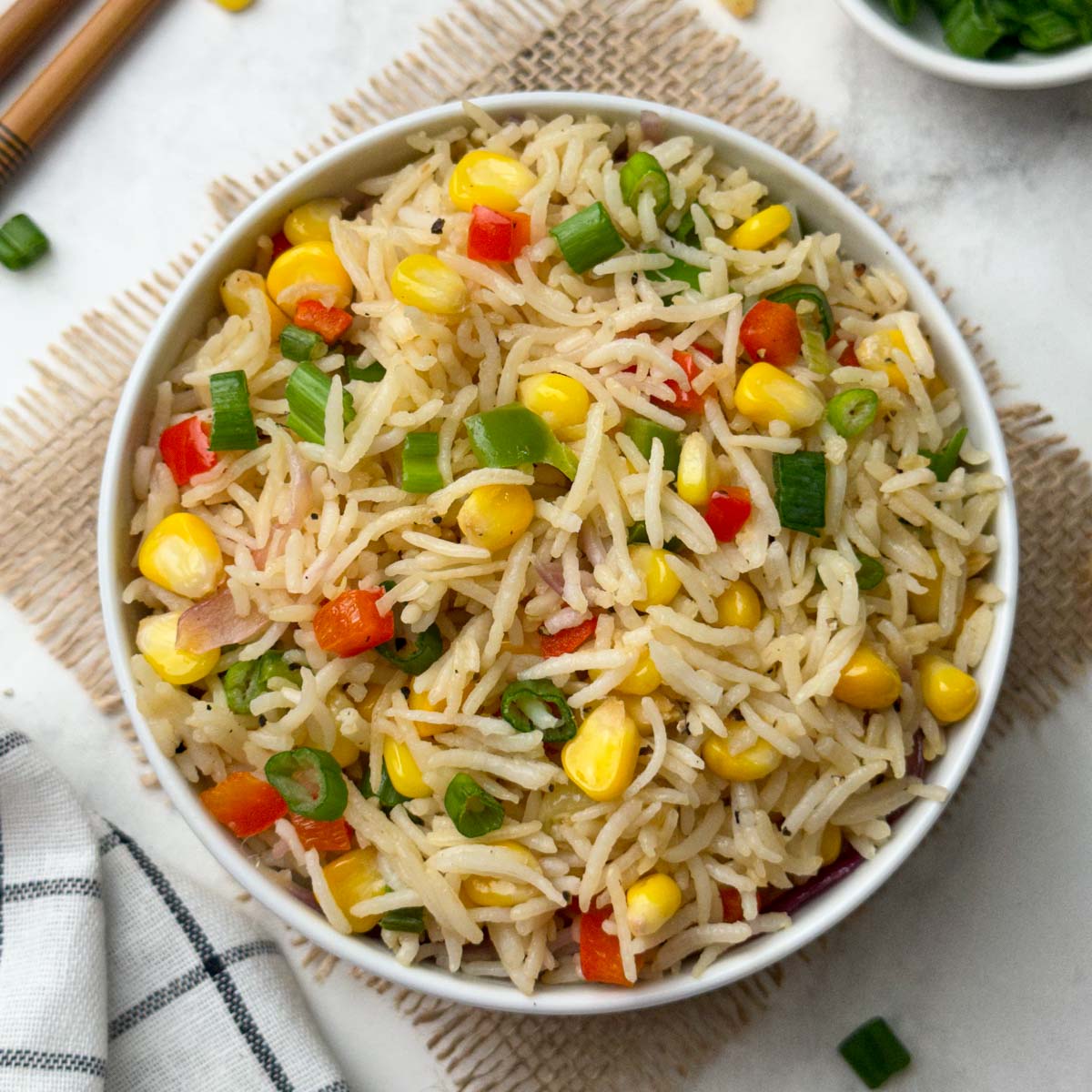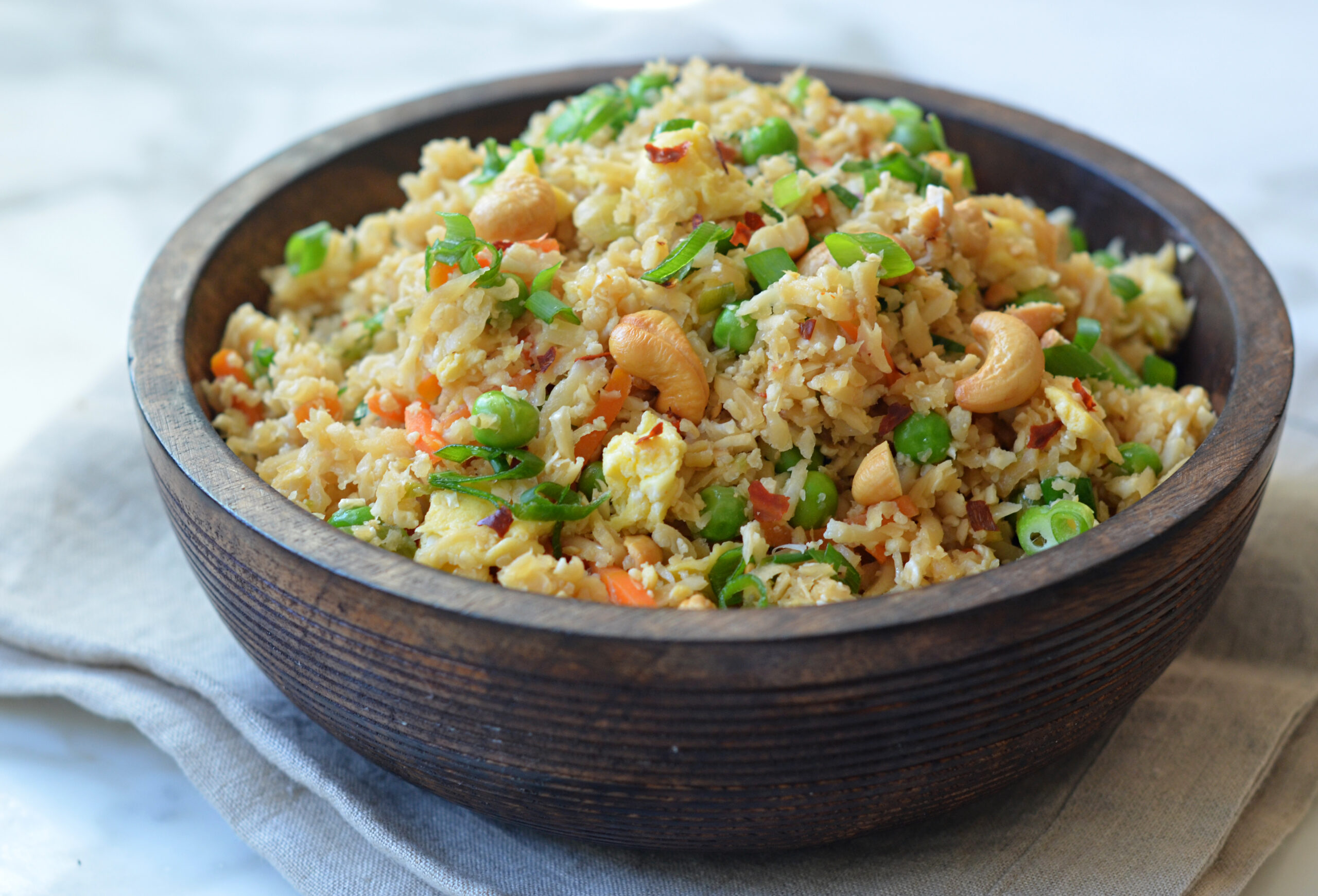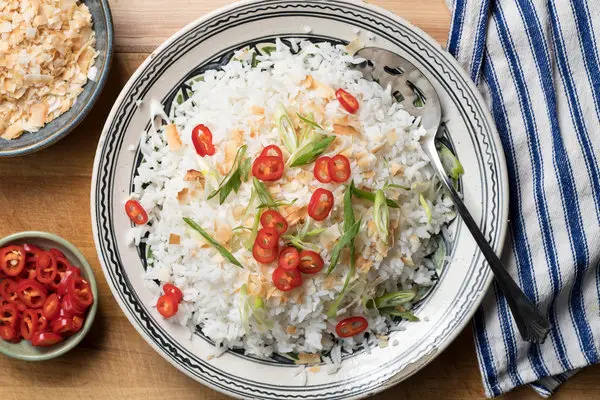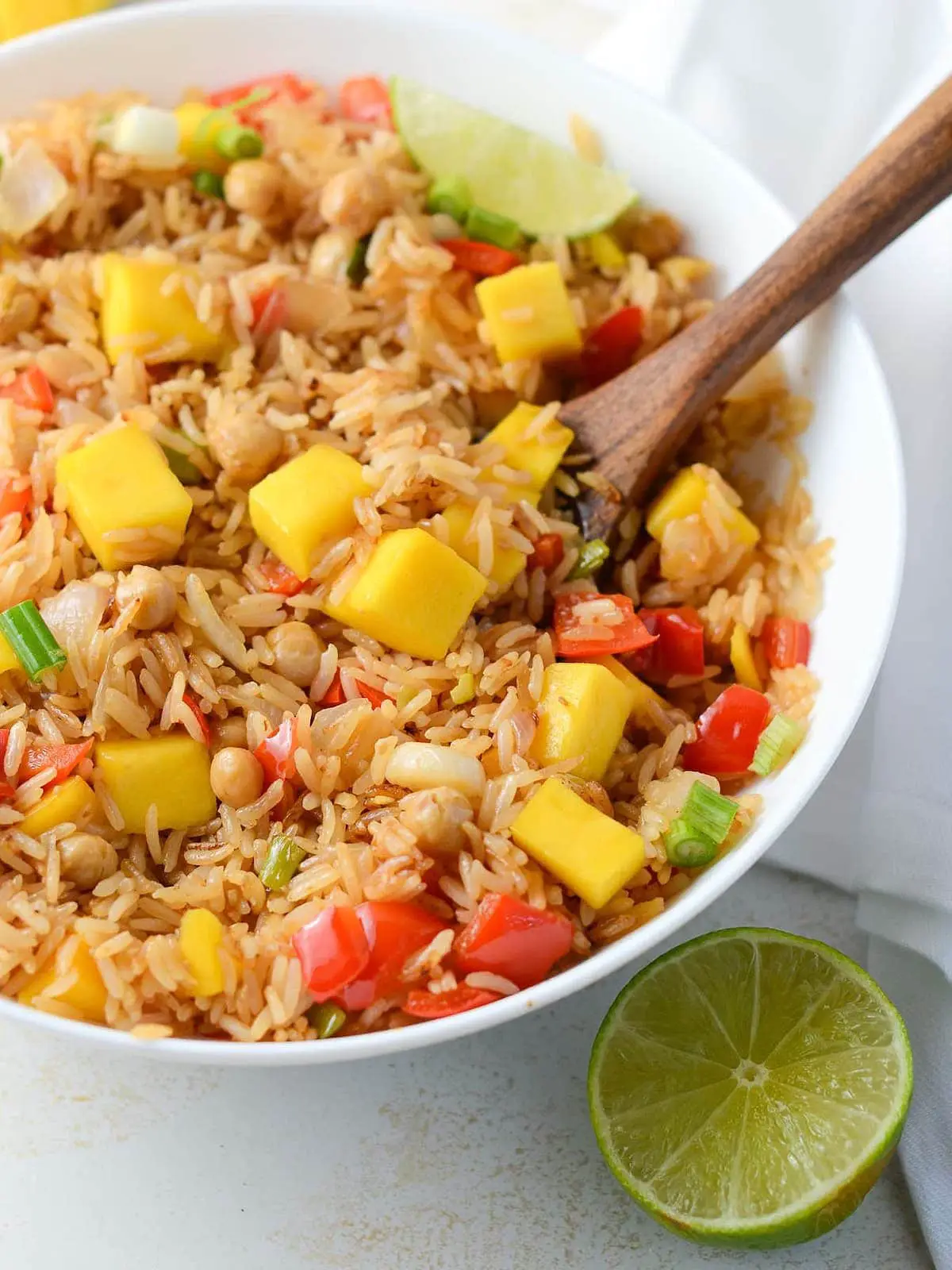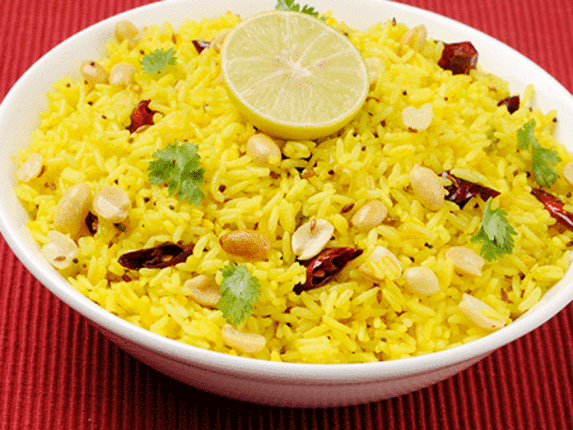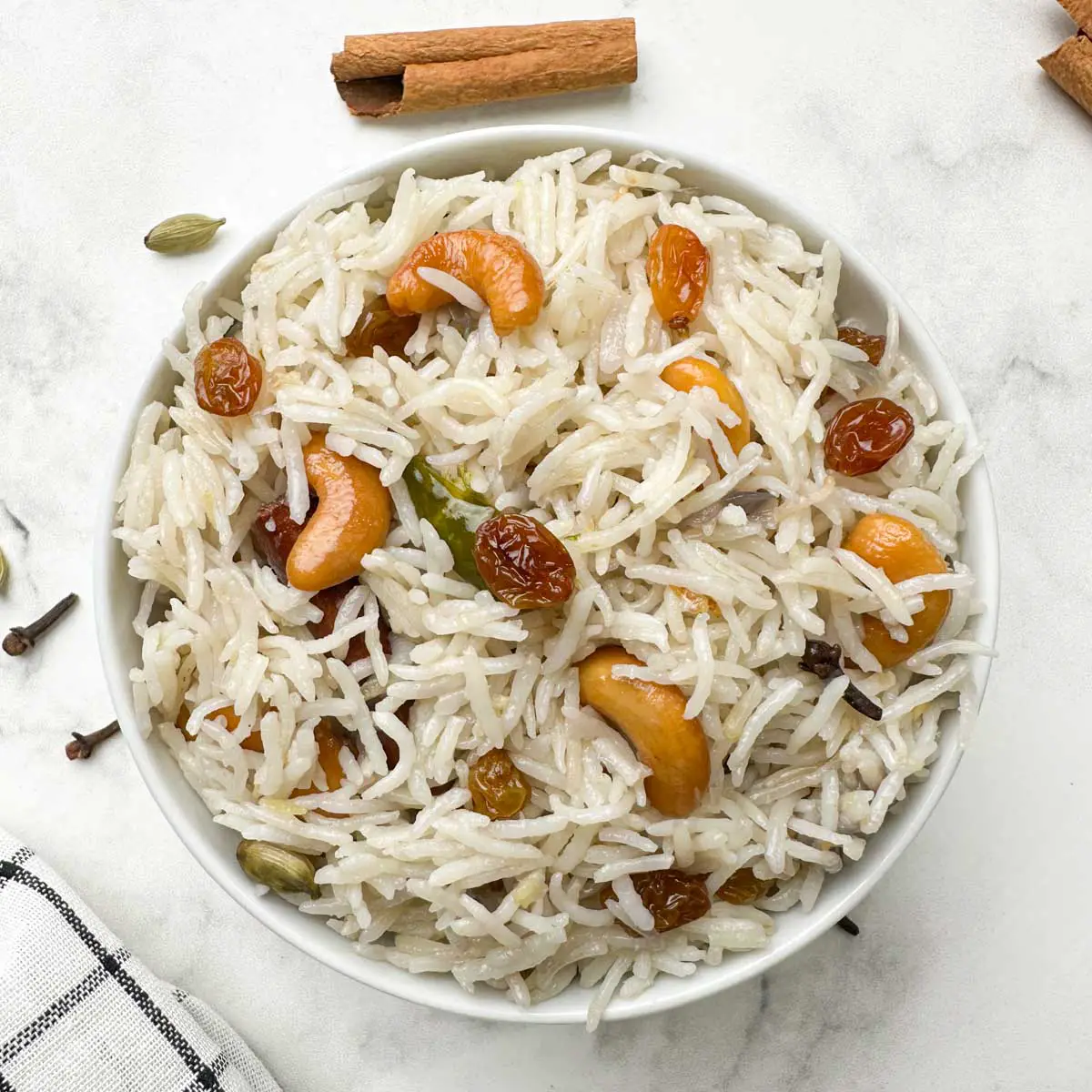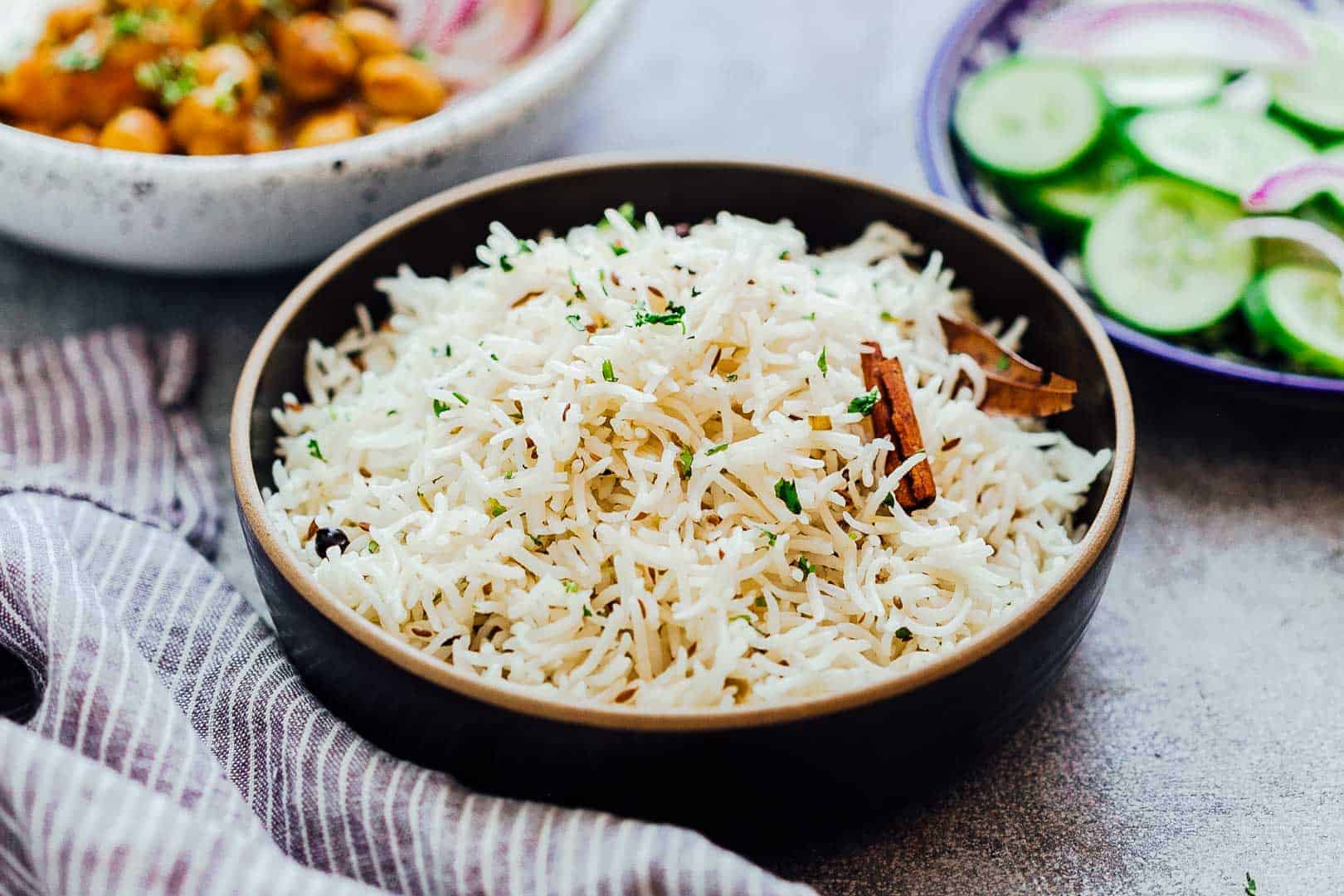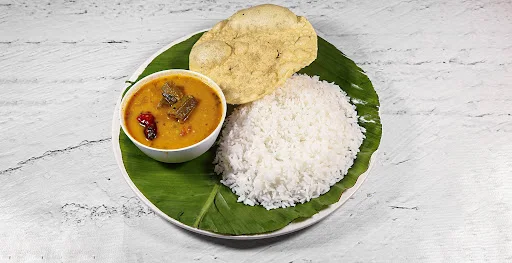About
Sambhar rice, a quintessential South Indian dish, is a delightful blend of aromatic rice and a rich, tangy lentil-based stew. This beloved recipe has found its way into kitchens worldwide, appreciated for its unique combination of flavors and heartwarming comfort. In this article, we will explore the art of preparing Sambhar rice step by step, making sure to capture the essence of this soul-satisfying dish.
Also, you read:
The Origins of Sambhar Rice
Originating from the southern regions of India, Sambhar rice has a history that dates back centuries. It is said to have been introduced by the Marathas in Tamil Nadu and has since evolved into a cherished staple of South Indian cuisine.
Sambhar Rice Recipe:

Sambhar rice, often lovingly referred to as "Sambhar Sadam" in South India, is a quintessential dish that captures the essence of this rich and diverse culinary region. This recipe is a harmonious fusion of aromatic rice and a hearty lentil-based stew, known as Sambhar. It's a cherished and soul-satisfying meal that not only tantalizes the taste buds but also warms the heart.
Ingredients
For Sambhar:
- Toor dal (pigeon peas)
- Mixed vegetables (such as carrots, drumsticks, and eggplants)
- Tamarind pulp
- Sambhar powder
- Turmeric powder
- Asafoetida (hing)
- Mustard seeds
- Curry leaves
- Oil
- Salt to taste
For Rice:
- Long-grain rice
- Water
- Salt
Instructions
Cooking the Rice
- Wash the rice thoroughly and soak it for 20 minutes.
- In a large pot, bring water to a boil, add a pinch of salt, and then add the soaked rice.
- Cook the rice until it's soft and each grain is separate. Drain excess water and set the rice aside.
Preparing the Sambhar
- Wash the toor dal (pigeon peas) and pressure-cook it with enough water until it's soft and mushy.
- In a separate pan, heat oil, add mustard seeds, and let them splutter.
- Add asafoetida (hing) and curry leaves for flavor.
- Add the mixed vegetables and sauté them for a few minutes.
- Now, add tamarind pulp, Sambhar powder, turmeric powder, and salt. Cook until the raw smell disappears.
- Mix in the cooked toor dal and let the Sambhar simmer until the vegetables are tender.
Serving the Sambhar Rice
- On a serving plate, place a generous portion of cooked rice.
- Ladle the hot and flavorful Sambhar over the rice.
- Garnish with fresh coriander leaves.
Notes
Recommended Products
As an Amazon Associate and member of other affiliate programs, I earn from qualifying purchases.
Nutrition Information:
Serving Size:
around 1 cup) of Sambhar rice:Amount Per Serving: Calories: 250-300Total Fat: 2-4gCarbohydrates: 50-60gFiber: 5-7gProtein: 8-10g
Serving Suggestion
- Serve your Sambhar rice with a side of fresh coconut chutney. The cool and creamy texture of the chutney complements the spicy and tangy flavors of the Sambhar, creating a perfect balance.
- Crispy papad or papadam is a popular accompaniment for Sambhar rice. Its crunchiness adds a delightful contrast to the soft rice and hearty Sambhar.
- Prepare a simple vegetable stir-fry as a side dish. Sautéed vegetables seasoned with mustard seeds, curry leaves, and a hint of spices make for a great accompaniment.
- For a cooling contrast, serve Sambhar rice with cucumber raita. The yogurt-based raita with cucumber and spices helps balance the heat of the Sambhar.
- Indian pickles, such as mango pickles or lemon pickles, can add a burst of tanginess and spiciness to your Sambhar rice. Just a small portion on the side can be incredibly satisfying.
- Poriyal is a South Indian stir-fry made with vegetables like beans, carrots, or cabbage, flavored with coconut and spices. It’s a nutritious and flavorful side dish.
- Pappadavada, also known as vada, is a savory fried snack made from lentils. It’s a delightful accompaniment that adds a crispy and savory element to your meal.
- Sliced and fried plantains, known as “Vazhakkai,” make for a sweet and savory side dish that complements the Sambhar rice beautifully.
- Provide lemon wedges alongside your Sambhar rice. Squeezing fresh lemon juice over the dish can enhance its flavors and add a zesty kick.
- A bowl of plain curd or yogurt can provide a cooling contrast to the spicy Sambhar. It’s a simple yet effective accompaniment.
- Prepare a fresh herb salad with cilantro, mint, and onion slices. It adds a refreshing and aromatic element to your Sambhar rice.
- Garnish your recipe with a handful of pomegranate seeds. They not only add a pop of color but also a sweet and juicy contrast to the dish.
FAQs
Q: What is the best type of rice to use for Sambhar rice?
A: You can use long-grain rice, such as Basmati or Sona Masoori, for the perfect recipe.
Q: Can I customize the vegetables in Sambhar?
A: Absolutely! Feel free to use your favorite vegetables or whatever is in season to make Sambhar even more delicious.
Q: Is Sambhar rice suitable for vegetarians and vegans?
A: Yes, It is a vegetarian and vegan-friendly dish, as it is made primarily with lentils and vegetables.
Q: Can I adjust the spiciness of Sambhar according to my preference?
A: Yes, you can control the spiciness by adjusting the amount of Sambhar powder and red chili.
Q: Is Sambhar rice a healthy meal choice?
A: This is packed with essential nutrients, making it a wholesome and nutritious meal option. However, be mindful of the portion size to maintain a balanced diet.
Conclusion
Sambhar rice, with its vibrant flavors and wholesome ingredients, is not just a meal but a cultural experience. This South Indian delicacy brings warmth and satisfaction to every bite, making it a cherished favorite worldwide.
You Might Also Like:
- Cinnamon Tea for Weight Loss
- chicken chatpata recipe
- Oreo Mug Cake Recipe
- Paneer Dum Biryani Recipe
- Aloo paneer paratha recipe

